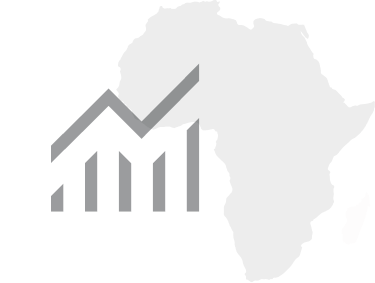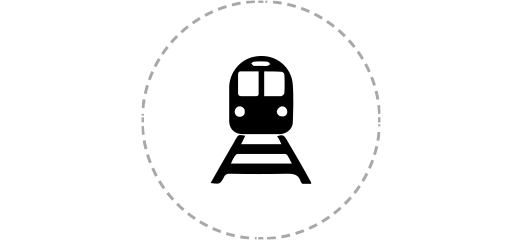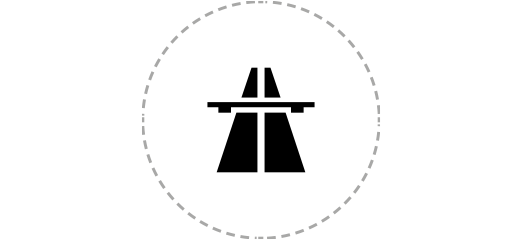African Continental Free Trade Area (AfCFTA): intra- continental trade still the lowest globally
04 April, 2023
The African Continental Free Trade Area (AfCFTA), launched in January 2021, commits signatories to removing tariffs on 90% of goods for other signatories, to progressively liberalise trade in services and to address other non-tariff barriers. All African countries but Eritrea are signatories, and, 44 countries out of 54 have ratified the agreement as of October 2022.
World Regions: Intra-regional Trade (2021)
African countries still mainly trade outside the continent
Intra-continental trade constitutes less than 13% of Africa’s total trade, in comparison to 66.9% in Europe, 63.8% in Asia & Oceania, and 44.4% in the Americas. The dependence on external markets leaves the continent highly exposed to crises and shocks in other parts of the world, as showcased by the impact of COVID-19 and the ongoing Russia-Ukraine war.
World Countries: Region accounting for biggest share of trade (2021)

According to UNECA, the AfCFTA could boost intra-African trade by around 40%. By lowering these barriers, the hope is that intra-regional trade will increase and both spur economic transformation and increase resilience to shocks.
AfCFTA still a work in progress
The AfCFTA is still a work in progress. With a score of 39.5 out of 100.0 in 2021, the Regional Integration indicator remains among the bottom quarter of IIAG indicators despite improvement over the last ten years (+1.8). Progress has been driven by greater government efforts to promote regional integration and a relaxation of visa regulations for travel among African countries. Despite this, intra-regional trade has still declined at an accelerating pace since 2012. In 33 African countries, intra-African trade has declined as a share of the total trade since 2012. In 41 African countries, intra-African trade still accounted for less than a quarter of the total in 2021.
ECOWAS leads the way on regional integration, but SADC does best on intra-African trade
The picture on regional integration varies across the continent. Among the Regional Economic Communities (RECs), the Economic Community of West African States (ECOWAS) leads the way in the IIAG Regional Integration indicator due to government efforts and open visa regimes. However, from a trade integration perspective, the Southern African Development Community’s (SADC) share of intra-African trade is over twice that of ECOWAS.
RECs: Regional Integration indicator scores (2021)
Intra-continental transport is key
A successful AfCFTA must be accompanied by progress in establishing transnational transport corridors. Specifically, it will be crucial to accelerate the development of the Programme for Infrastructure Development’s (PIDA) Trans-African Highway Network Programme, as well as Agenda 2063’s African Integrated High-Speed Rail Network (AIHSRN) and Single African Air Transport Market (SAATM).
However, with the exception of rail, the IIAG shows transport networks have made no progress since 2012. Most countries have seen a decrease in the size of road networks and the prevalence of paved roads per capita. Shipping and postal facilities have also deteriorated. If the AfCFTA is to be a success, these barriers to trade and business must be addressed. Without the relevant infrastructure to ease movement within the continent, intra-regional trade will continue to be costly and inaccessible, regardless of tariff reductions.
The Afrail Express, part of the AIHSRN, will connect the continent's capitals through three key rail corridors: Cape Town to Casablanca, Casablanca to Cairo, and Cairo to Cape Town. Construction on the Cape town to Casablanca route via Windhoek, Luanda, Lusaka Kinshasa, Lagos and Dakar is planned to commence in May 2024
Upon completion, the Trans-African Highway Programme will have established ten transcontinental road corridors: Cairo to Dakar, Algiers to Lagos, Tripoli to Cape Town, Cairo to Cape Town, Dakar to N'Djamena, N'Djamena to Djibouti, Dakar to Lagos, Lagos to Mombasa, Beira to Lobito, and Djibouti to Bata.
Digital platforms will be crucial to success
The success of related digital platforms will also be instrumental to building intra-African supply chains. Afreximbank’s African Trade Gateway, an agglomeration of interrelated digital platforms, will be key to reducing the complexity of payment transfers within Africa. The Pan-African Payment and Settlement System will allow payments for intra-African trade in local currencies, while the Trade Information Portal will help African businesses easily identify potential suppliers of inputs or distributors of products elsewhere in the continent.
While access to these platforms remains an issue, the IIAG shows that things are moving in the right direction. Every country on the continent has greater access to internet and computers than in 2012, while every country but South Sudan has seen an increase in mobile connectivity and communications. However, Internet & Computers (24.5) remains the second lowest scoring indicator on the IIAG in 2021, while almost 600 million people in Africa still lack access to electricity, a prerequisite for digital access. There is still a long way to go.
Out of the 81 IIAG's indicators, Mobile Communications (+21.8) and Internet & Computers (+16.9) are the 2 most improved over the decade.
World Countries: Access to electricity




